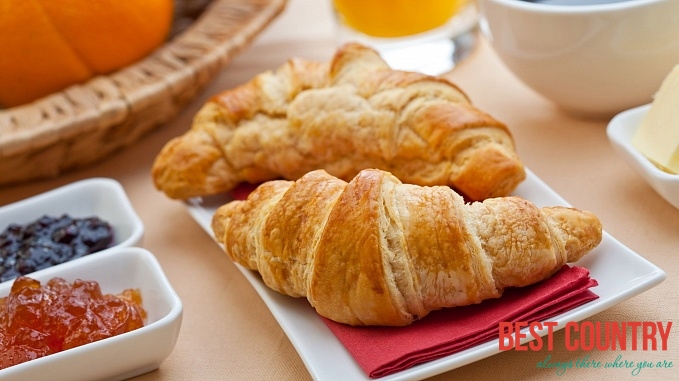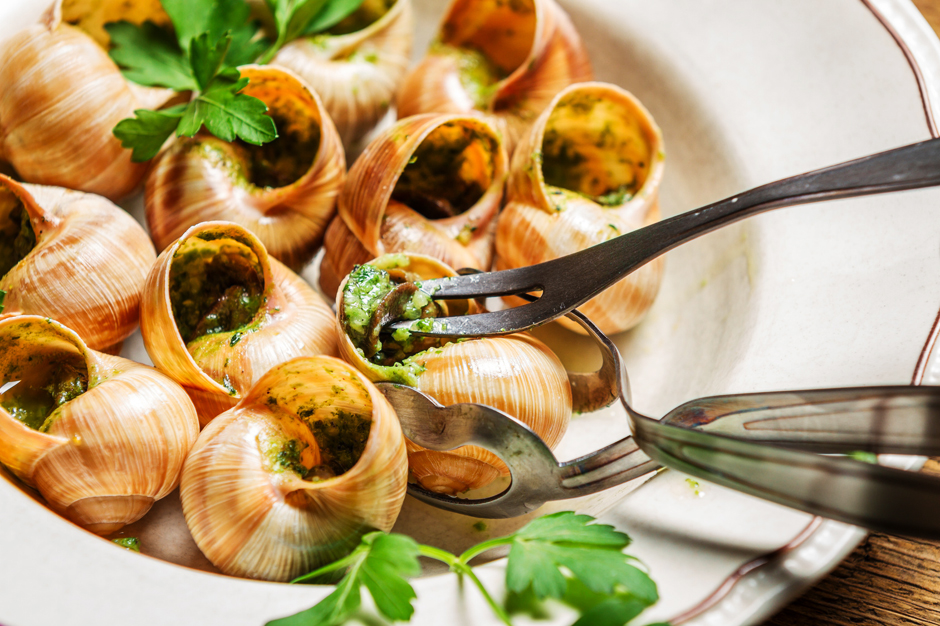Food is a subject of prime importance to every French person. It is not uncommon for suggestions for the day's menus to be discussed by family members at the breakfast table over a hot drink, breads, and preserves. Traditional French food recipes are treasured and the happy purchase of a young vegetable or a fine piece of meat will send the whole family into rapturous anticipation of the "special dish."
French Meal and Customs
 The morning meal is light but each of the simple items must be "just so" - the exact proportion of hot milk to well-prepared coffee, the freshest bread of exactly the length, width, and crust favored by the members of the family, and choice preserves to each one's taste.
The morning meal is light but each of the simple items must be "just so" - the exact proportion of hot milk to well-prepared coffee, the freshest bread of exactly the length, width, and crust favored by the members of the family, and choice preserves to each one's taste.
The noon meal is usually dinner, the special meal of the day, although in cities this pattern is changing somewhat as more women move into the workforce.
A traditional dinner would begin with hors d'oeuvres, literally "aside from the main work," and meant to be small appetite teasers.
 These may be taken with a light aperitif, a favorite being Kir; directions for its preparation include opening a lightly chilled bottle of Chablis and pouring off one drink (for the server) then replacing that amount of wine in the bottle with Creme de Cassis which gives the pale wine a rosy glow.
These may be taken with a light aperitif, a favorite being Kir; directions for its preparation include opening a lightly chilled bottle of Chablis and pouring off one drink (for the server) then replacing that amount of wine in the bottle with Creme de Cassis which gives the pale wine a rosy glow.
The fish course would be followed by a course of meat, poultry, or game, never carved at the table. In homes the carving is usually done in the kitchen and the foods are presented attractively arranged by a servant holding spoon and fork in what is commonly called "French service."
Carefully prepared vegetables may be cooked and served as a garnish to the main course or immediately after as a small separate course.
A serving of salad greens, cool, crisp, and shiny with a simple vinaigrette, will always follow the main course. Family dinners will end with cheese and fruits either fresh or poached and a demitasse of coffee.
One wine may be chosen that will complement all the courses or a separate wine will be served for each course, always proceeding in the order from light dry wines to heavier and sweeter. Wine may be on the table but is never taken with a green salad (the vinegar in the salad would disturb the palate's appreciation of the wine).
The staple food to the French is bread. At every French meal, the bread basket is placed on the table and remains as a part of each course, the last crust to be enjoyed with cheese.
Only the Fruit, the sweet dessert (if there is one for a special occasion), and the demitasse coffee will be taken without bread. Bread is not only considered a symbol of hospitality and satiety, it is also viewed as important to cleanse the palate for the appreciation of the flavors of the various courses.
Water is never on a French table; wine is served throughout the meal to everyone at the table, regardless of age, and black coffee signifies the end of the meal. The French also do not add water to sauces or casseroles – how can one add water when stocks, vegetable juices, and wines are always at hand?
French banquet menus follow traditional patterns too. The courses are usually multiplied, depending on the grandeur of the occasion.
Commonly, soup either hot or cold followed by hot hors d'oeuvres then a course of cold hors d'oeuvres would precede the fish course. A course of poultry or fowl may precede a more substantial entree of roasted meat or game.
Carefully chosen vegetables garnishing the entree will accompany the meat. Or a course consisting of cooked vegetables by themselves or in the form of small casseroles may be served preceding a small course of green salad to clear the palate.
Cheese and fruit would then be followed by an array of sweet desserts, the choice depending again on the type of occasion. After-dinner liqueurs may accompany the demitasse coffee. In a gathering of true gourmets, it would be considered bad taste to smoke during a meal as this would disturb the taste sensations and thus the appreciation of the diners.
French table service differs only slightly from that in other western countries. It is customary to place cutlery with the fork prongs and soup spoons facing downwards to the cloth. Dessert spoon and fork are placed above the dinner plate setting with the fork at the top and the spoon below.
French family supper menus most frequently consist of a good satisfying soup or casserole, bread, and wine. It is a lighter, simpler meal than that the noon meal. But as in other countries, this pattern is changing as people dine out in restaurants, bistros, and even fast-food outlets.